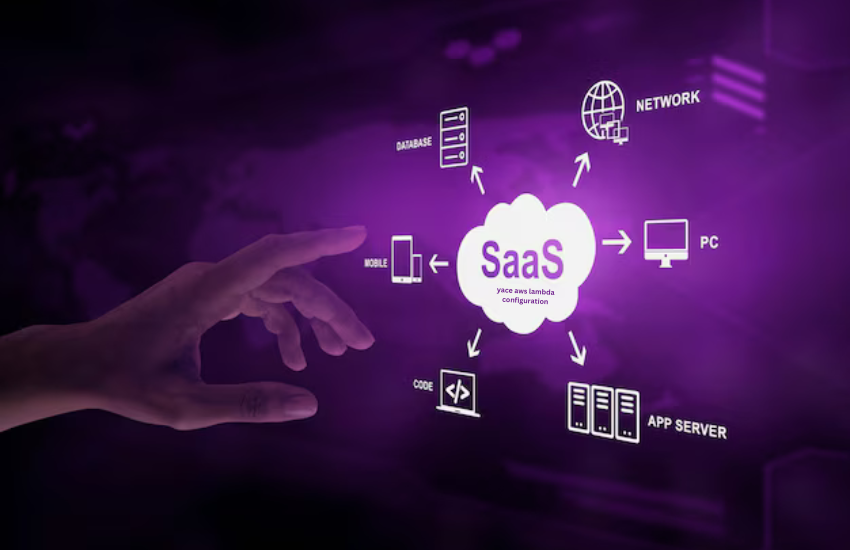Combining YACE with AWS Lambda allows for efficient, scalable, and cost-effective monitoring of AWS services. This integration is highly beneficial for cloud-native applications, enabling real-time monitoring without the overhead of managing servers.
Key Features of YACE
Understanding AWS Lambda Architecture
AWS Lambda operates on an event-driven architecture, where functions are triggered by events such as HTTP requests, changes in data, or scheduled tasks. Lambda functions are stateless and automatically scale up to meet the demand, making it an ideal choice for running YACE. This architecture eliminates the need for manual scaling and infrastructure management, allowing developers to focus on building and monitoring their applications.
Prerequisites for YACE AWS Lambda Configuration
Before you can configure YACE on AWS Lambda, you need to ensure a few prerequisites are in place. First, you need an AWS account with appropriate permissions. You’ll also need to set up AWS Identity and Access Management (IAM) roles that allow YACE to access the necessary AWS services. Additionally, you’ll need to have the AWS Command Line Interface (CLI) installed and configured on your machine. Lastly, configuring Prometheus to scrape metrics from AWS CloudWatch is essential for effective monitoring.
Setting Up YACE in an AWS Environment
Setting up YACE on AWS involves installing the YACE tool on an AWS Lambda function. Start by creating a Lambda function in the AWS Management Console. Once the function is created, upload the YACE binary and configure the function’s environment variables to define which AWS services to monitor. After setting up the function, test it to ensure that YACE is correctly scraping and exporting metrics.
IAM Roles and Permissions for YACE
To operate YACE on AWS Lambda, you’ll need to create IAM roles with the necessary permissions. These roles should allow YACE to read CloudWatch metrics and interact with other AWS services that you intend to monitor. It’s crucial to follow security best practices by assigning the least privilege necessary and regularly reviewing permissions to avoid security risks.

Configuring YACE on AWS Lambda
Configuring YACE on AWS Lambda involves several steps. First, set up the required environment variables in the Lambda function to specify the AWS services and regions to monitor. Next, create a configuration file for YACE, detailing the metrics to be scraped and exported. Additionally, manage the Lambda function’s timeout and memory settings to ensure that it can handle the workload efficiently.
Integrating YACE with Prometheus
To integrate YACE with Prometheus, you need to configure Prometheus to scrape metrics from the YACE endpoint. This involves updating the Prometheus configuration file with the appropriate scrape job details. Once the integration is set up, you can test it by querying the metrics in Prometheus and visualizing them using Grafana or another compatible tool.
Deploying YACE AWS Lambda Using Infrastructure as Code (IaC)
Infrastructure as Code (IaC) tools like AWS CloudFormation and Terraform can automate the deployment of YACE on AWS Lambda. Using these tools, you can define your AWS resources in code, making the deployment process repeatable and scalable. This approach also simplifies updates and maintenance, allowing you to manage YACE configurations more efficiently.
Monitoring YACE Performance in AWS Lambda
After deploying YACE, it’s important to monitor its performance to ensure it’s functioning correctly. AWS CloudWatch Logs provide detailed logs of your Lambda function’s execution, helping you identify and troubleshoot issues. Additionally, setting up CloudWatch Alarms can notify you of any performance degradation or failures in real-time, enabling proactive management.
Scaling YACE on AWS Lambda
Scaling YACE involves configuring AWS Lambda to handle increased traffic and workloads. Lambda automatically scales based on demand, but it’s important to monitor the scaling behavior and adjust settings such as the concurrency limit to avoid excessive costs. Implementing cost management strategies, such as optimizing the number of metrics scraped or using AWS pricing models, can help control costs while scaling.
Security Best Practices for YACE on AWS Lambda
Security is paramount when running YACE on AWS Lambda. Implementing best practices, such as securing environment variables, encrypting sensitive information, and regularly rotating IAM credentials, can help protect your monitoring setup from unauthorized access. Additionally, monitoring for unusual activity and applying patches promptly are essential for maintaining security.

Troubleshooting YACE AWS Lambda Configuration
Troubleshooting YACE on AWS Lambda involves identifying and resolving common issues such as permission errors, function timeouts, and performance bottlenecks. Reviewing Lambda logs and using AWS X-Ray for tracing can help diagnose and fix these issues efficiently. Additionally, understanding the underlying AWS services and how YACE interacts with them is crucial for effective troubleshooting.
Case Studies: YACE AWS Lambda in Action
Real-world case studies provide valuable insights into the practical application of YACE on AWS Lambda. These examples highlight the benefits, challenges, and lessons learned from organizations that have successfully implemented this setup. Case studies also offer a glimpse into future trends in cloud monitoring, such as the increasing adoption of serverless technologies.
FAQs on YACE AWS Lambda Configuration
- How do I configure YACE for multi-region AWS environments?
- Configuring YACE for multi-region environments involves setting up multiple Lambda functions, each configured to scrape metrics from a specific region. You can also use a single YACE instance with cross-region access, depending on your monitoring needs.
- What are the cost implications of running YACE on AWS Lambda?
- The cost of running YACE on AWS Lambda depends on factors such as the number of Lambda invocations, the duration of each invocation, and the amount of data transferred. AWS Lambda’s pay-per-use model ensures that you only pay for what you use, but it’s important to optimize configurations to minimize costs.
- How does YACE handle service limits?
- YACE is designed to work within AWS service limits. However, if your usage exceeds these limits, you may need to request a limit increase from AWS or adjust YACE configurations to reduce the number of metrics collected.
- Can YACE monitor custom CloudWatch metrics?
- Yes, YACE can be configured to scrape custom CloudWatch metrics by specifying them in the YACE configuration file. This allows you to monitor application-specific metrics alongside standard AWS metrics.
- How do I secure my YACE configuration on AWS Lambda?
- Securing your YACE configuration involves encrypting sensitive environment variables, using IAM roles with the least privilege, and regularly reviewing security settings. Additionally, implementing AWS Secrets Manager for managing secrets can enhance security.
- What tools can I use to visualize YACE metrics?
- YACE metrics can be visualized using Prometheus-compatible tools such as Grafana. These tools offer powerful visualization options, allowing you to create custom dashboards and alerts based on your monitoring data.

